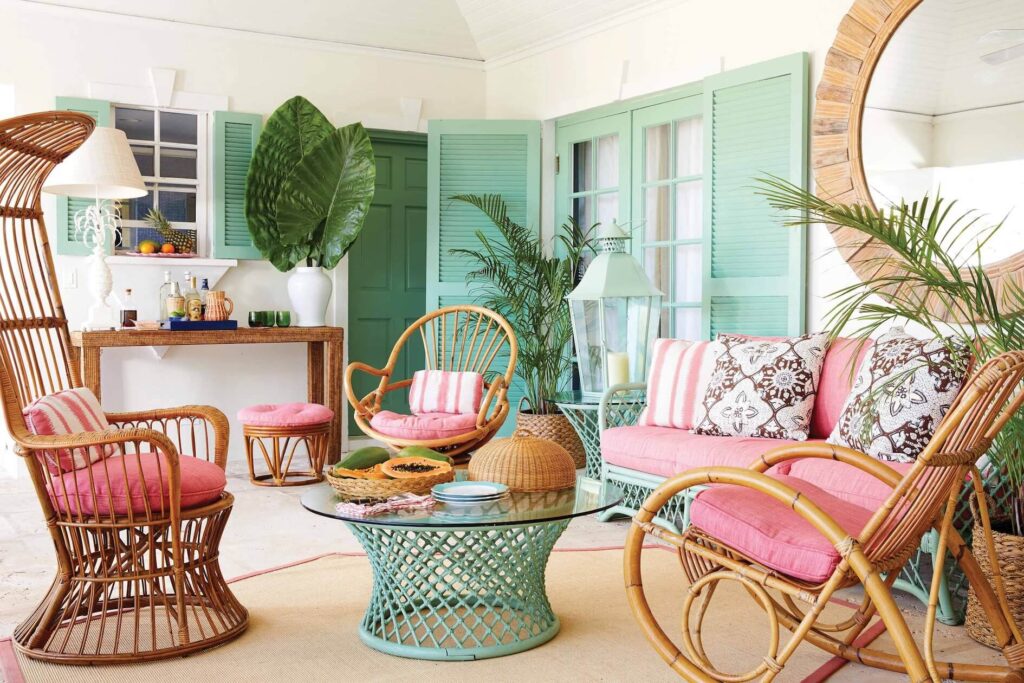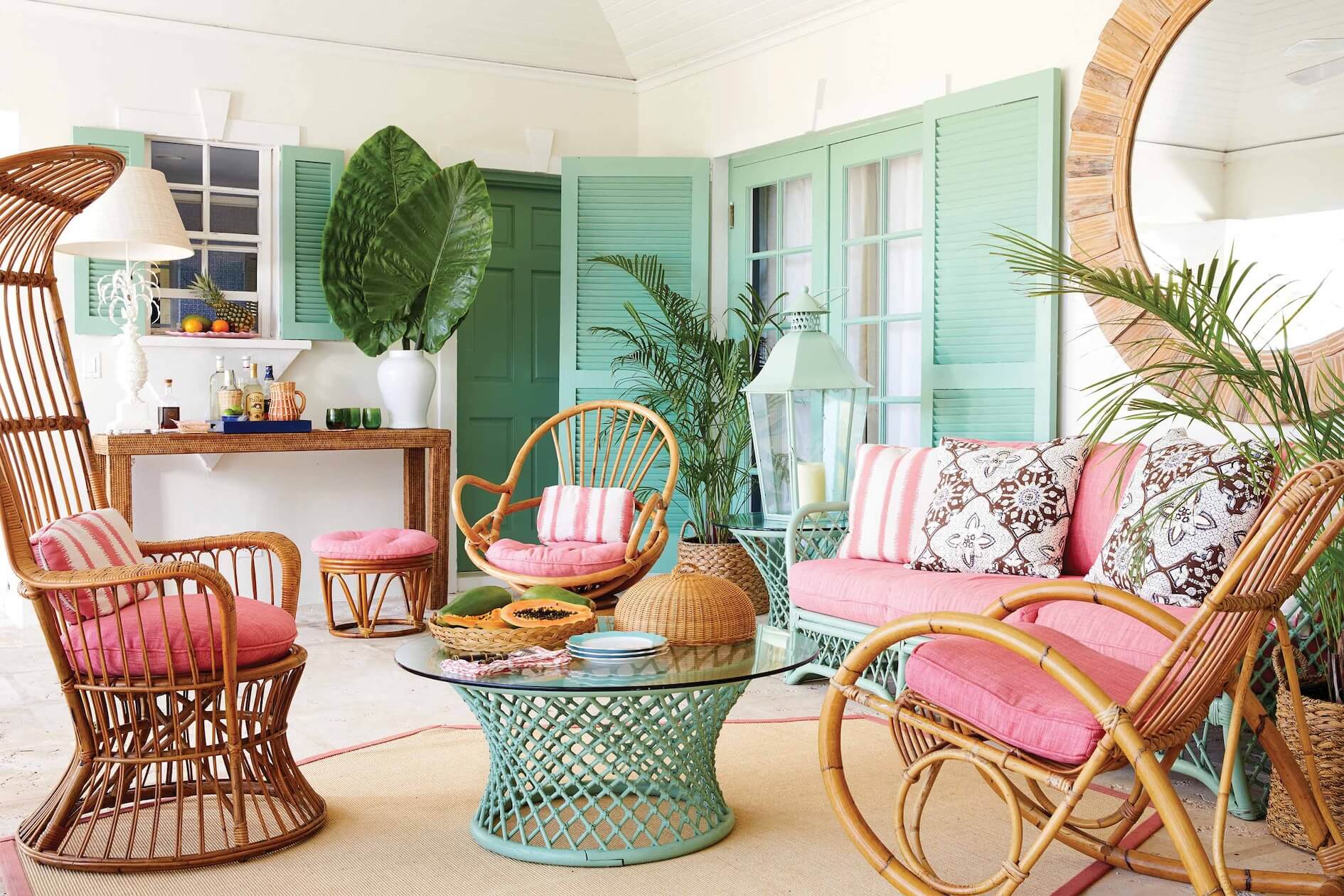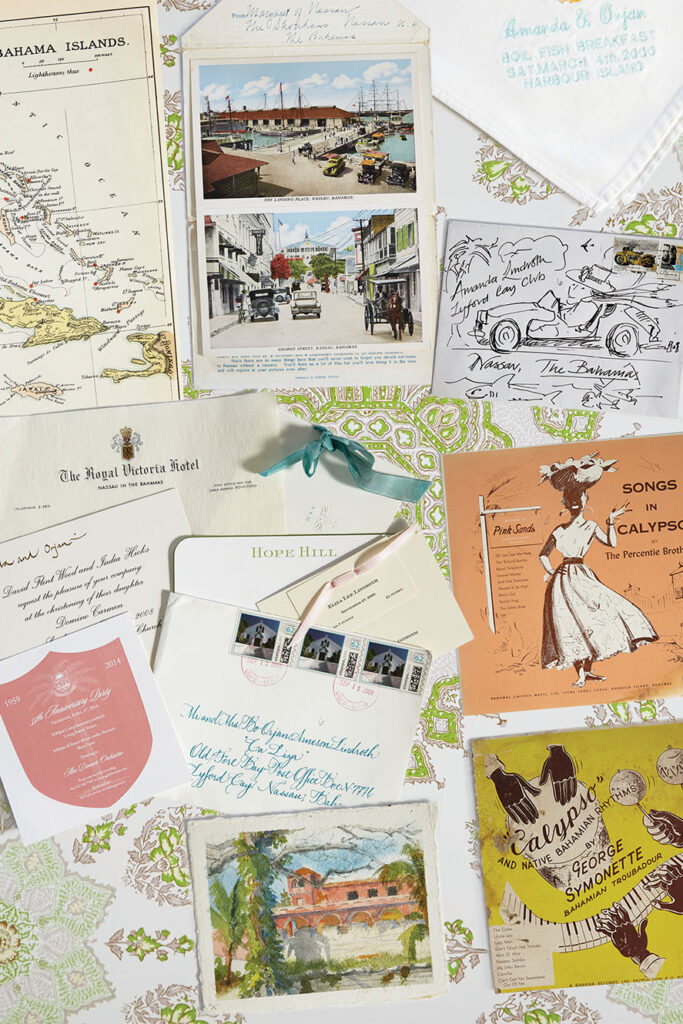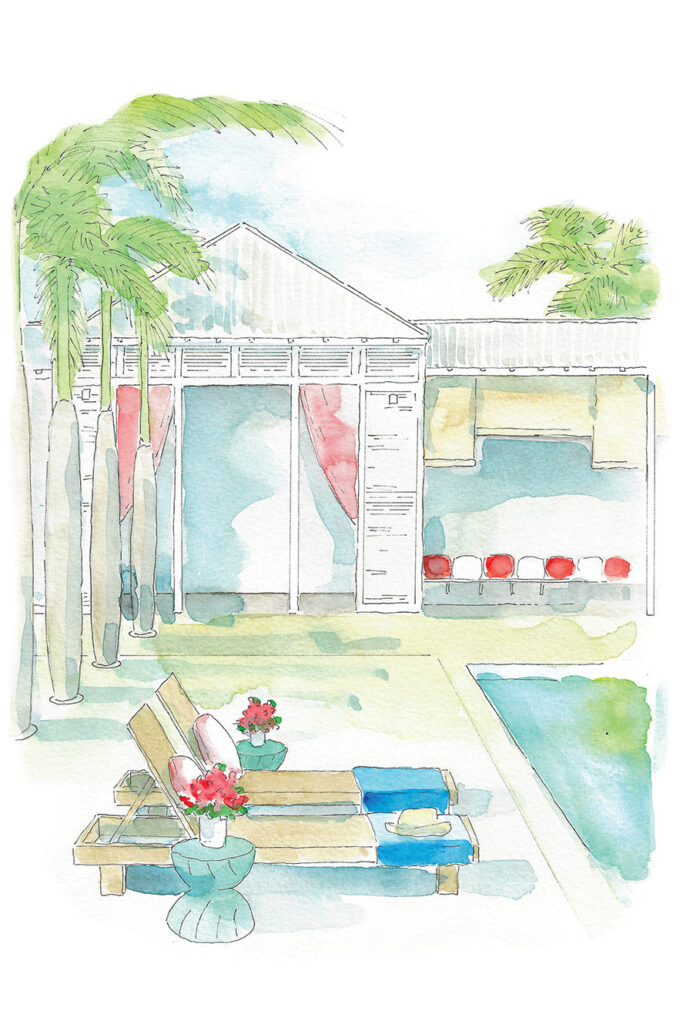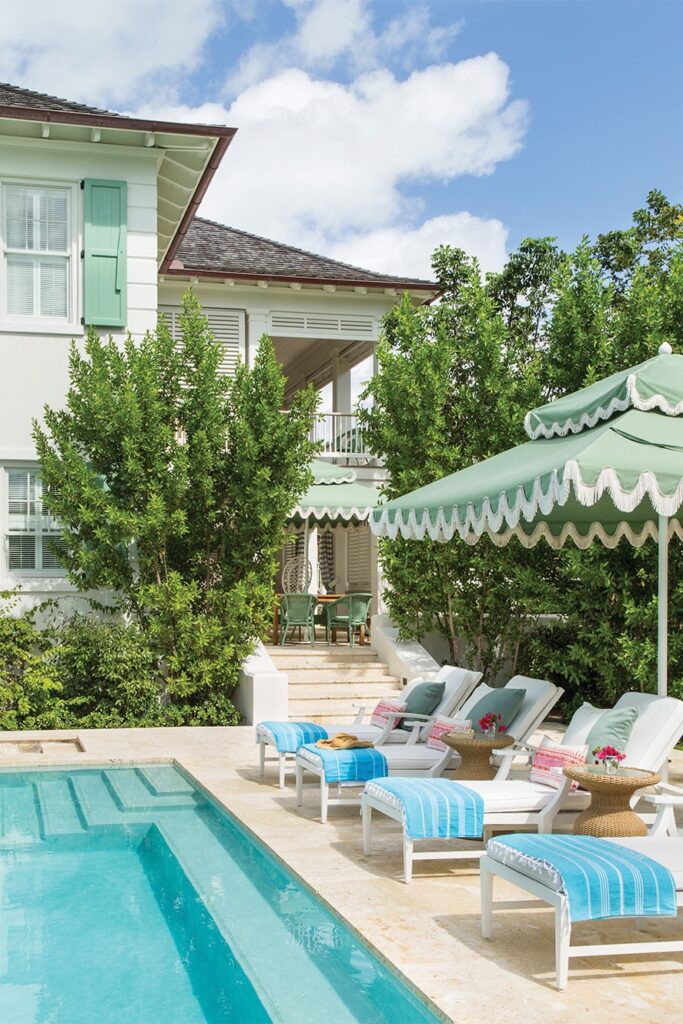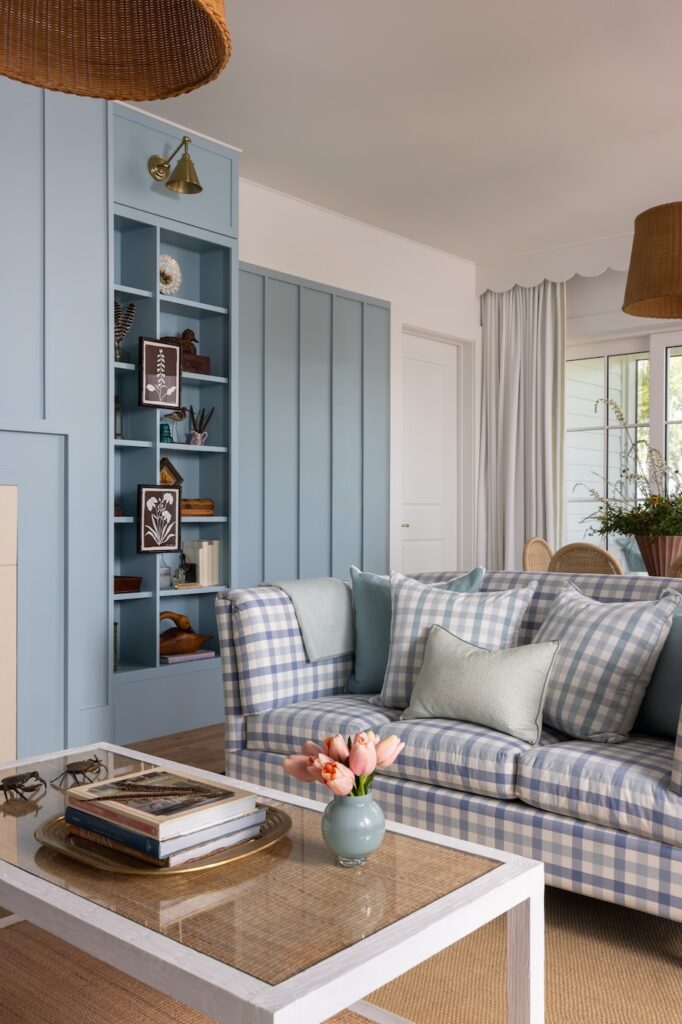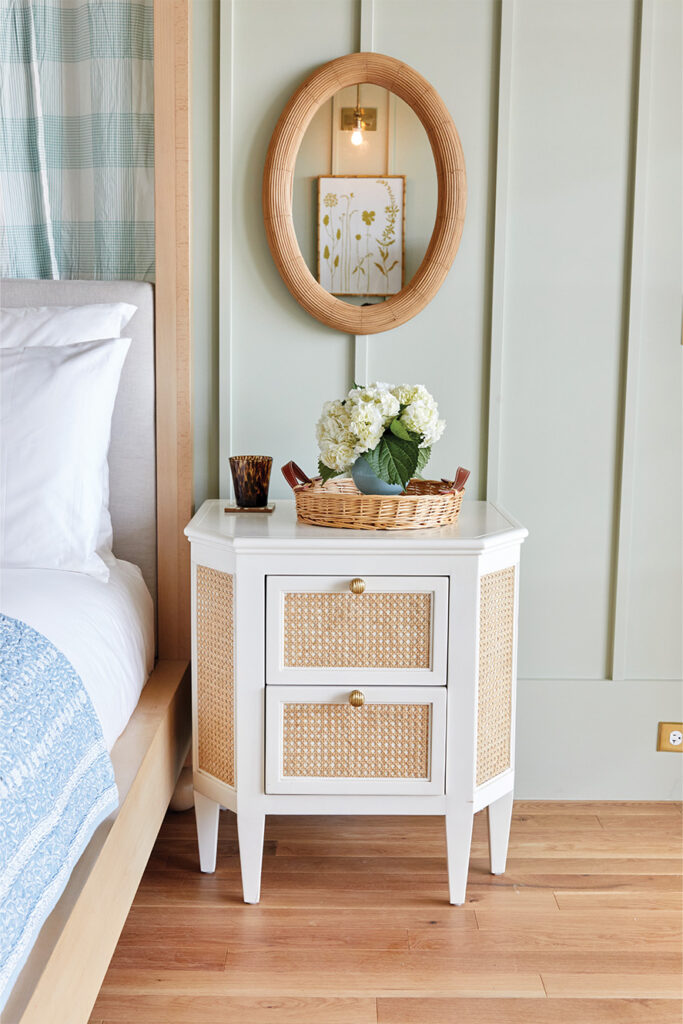It’s not a fair question, especially after a career as vast as Amanda Lindroth’s. But as a designer—especially working a fair deal in the Bahamas and South Carolina—she’s used to overcoming obstacles (delayed deliveries, customs clearance paperwork, and more).
Still: Is there a word or two she’d use to describe her work, her look?

Anyone keeping tabs on the world of interior design is no doubt familiar with her bio and distinctive aesthetic, and might have a few ideas what her answer might be—charismatic, ornate, sophisticated. Raised just outside Palm Beach in the height of the area’s visual influence, the ‘70s, she remembers weekend trips to shop in town and getting dressed up for lunch at Petite Marmite, soaking in the glamour of the famed Worth Avenue.
Now, from an office on that same street, fresh off a plane from the Caribbean, her brow furrows a tad.
“Timeless,” she says.

That’s a particularly tricky needle to thread. In interior design, as with any creative endeavor, trends ebb and flow like the tides, and when they fall out of favor, styles risk looking stale. By contrast, central to Lindroth’s timeless ethos is her emphasis on found pieces and classic shapes, eschewing catalog furniture in favor of bespoke creations and vintage treasures imbued with character and history. At the heart of her aesthetic lies an appreciation for the alchemy of design—the art of blending disparate elements to create harmonious spaces that feel both familiar and fresh.
From rattan and wicker furnishings to crisp cotton prints and airy linens, her interiors are a master class in balance and restraint, effortlessly combining traditional motifs with contemporary flair and pops of color.

Lindroth’s designs are consistently crafted with entertaining in mind, reflecting her role as the consummate hostess. She prioritizes the enjoyment and comfort of her guests in every detail. She makes sure, for instance, there are notepads and a jar full of pencils on a night table, alongside a water goblet, in case inspiration or thirst strike. She makes sure “there are live things in the house,” orchids or orchid baskets or flowers picked fresh from the garden. Books and magazines are placed next to seating areas for ease of access.
And there are lots of seating areas. “I think our lives are all about joy and frivolity and abundance and generosity,” she says. “And so my rooms always have a lot of seating in them.”

One of Lindroth’s most anticipated collaborations is her work with The Dunlin, Auberge Resorts Collection, a boutique hotel and one of Auberge’s newest 2024 openings tucked inside the breathtaking landscapes of the Charleston Sea Islands on the Kiawah River. She’s been working with the team at Auberge for “three or four years” on the project and, in many ways, her design there exemplifies her philosophy at scale. She curated every part of the hotel, from the guest rooms to the common areas, the spa, the bar and restaurants. There are plenty of places to put your feet up.

Drawing inspiration from the region’s rich heritage and natural beauty, Lindroth has crafted an immersive experience at The Dunlin that seamlessly blends modern comfort with old-world charm.
To come up with the hotel’s design concept, Lindroth and her team took a tour of river homes on South Carolina’s coast to draw inspiration. “We pinched all of these ancient-y strange early 20th century Southern [design] idioms. All of the [Dunlin] bedrooms have board and batten.”
Lindroth elevates the humble style with exacting details: “The rooms all have four poster beds and they’re draped in cotton gingham. But there’s still an element of precision and preciseness to them.”
Lindroth is known for her colorful design, which makes her chuckle. Good upholstery, rattan and wicker, cotton prints, and tons of white—white cotton, white linens—she feels, are her hallmarks. “Color is the part that scares me,” she says.
But there’s color aplenty at the Kiawah River property. One color in particular. The Dunlin’s interior is notably and purposefully marsh green.

“Every window, every door, you see the marsh,” she explains. “There’s not a bad room in the hotel because it’s surrounded by this beautiful landscape. And the color that we chose for the room is just like the marshy green. It really is like that layer of warmth.” In that way, Lindroth’s design bleeds into the landscape. “It’s really beautiful,” she says. Even more so when you consider the surrounding property is teeming with hundreds of 150- to 250-year-old live oak trees that cast off “this lovely shade,” making the area as comfortable as if she had designed the surrounding terrain herself.

Lindroth is particularly excited about the hotel’s buzz-worthy bar, The Willet Room, which will be open day and night and will no doubt fast become a social hub of Kiawah River. It features checkered floors and Drucker barstools and that signature green. In it the room’s focal point is a one-of-a-kind rattan lattice bar wall detail and “a lot of rattan lighting, this whole birdcage concept,” she says, a subtle nod to the dunlin, the titular tiny birds with rust-colored backs, black bellies and notably long, curved bills that winter in the bays and estuaries of South Carolina’s lush coast.

Of rattan, Lindroth is acutely passionate. She admits it has its detractors, but Lindroth defends it staunchly. At The Dunlin, in her hands, and combined along with the many design elements that make her her, it transcends, design alchemy achieved once more.
“We created this environment for [guests] to have an exceptional amount of relaxation and to feel like [they’re] in the countryside and taking a break,” she says. “Our hope is, the minute this hotel opens, it looks like it’s been there for 50 or 100 years.”
In other words: timeless.
